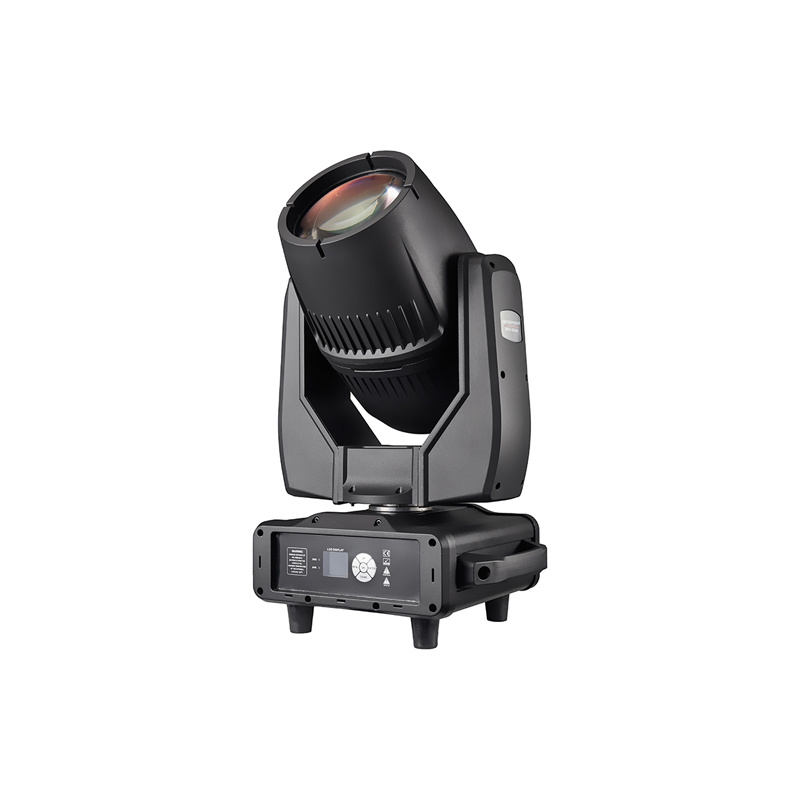Beam 380 Stage Light Guide: Power, Effects & Buying Tips
Classification:
summary description]
If you're in the world of live shows, club events, or concert productions, you've probably come across the term "Beam 380." But what does it really mean? And more importantly, how do you know if it's the right lighting tool for your setup?
This article breaks it down in plain terms — what a Beam 380 is, what it does, and why professionals choose it for large-scale lighting demands.
So, What Is a Beam 380 Light?
Put simply, a Beam 380 is a type of moving head beam light powered by a 380-watt lamp. It’s built to deliver a super-sharp, narrow beam of light that travels long distances, making it ideal for high-impact lighting in large venues, indoors or out.
It’s not just about raw power, though. Beam 380 lights often include color wheels, gobos, prisms, and fast pan/tilt capabilities, giving you flexibility and creative control in a single fixture.
The Real Problem: Why Are Users Searching for “Beam 380”?
If you’re looking up “beam 380,” chances are you're facing one (or more) of these challenges:
1. Lighting a Large Space with Limited Fixtures
Whether it’s a concert stage, festival field, or spacious nightclub, lighting big areas evenly is no small feat. Beam 380 units are designed to shoot crisp, bright beams over long distances, so you don’t need dozens of smaller lights cluttering the rig.
2. Needing Multiple Effects Without Overcomplicating Your Setup
Event professionals often ask: “Can one light do it all?” With the Beam 380, the answer is almost always yes. Between rotating gobos, dual prisms, rainbow effects, and color wheels, it can simulate complex visuals with just a few units. Less equipment, more impact.
3. Seeking Compatibility with DMX and Modern Controllers
Another common concern is integration. Beam 380 lights typically support DMX512, the industry standard. That means you can connect them to consoles like MA Lighting, ChamSys, or software-based systems without a hitch.
4. Looking for Long-Term Reliability
No one wants to deal with frequent breakdowns or constant maintenance. Most Beam 380 models are engineered for professional use, with durable housings and effective cooling systems. That keeps the lamp running efficiently and reduces wear and tear, essential for rental companies or touring setups.
Beam 380 vs Beam 230: Is It Worth the Upgrade?
If you're already familiar with the Beam 230, you might be wondering what justifies the jump to a 380W model. Here's a side-by-side for quick comparison:
FeatureBeam 230Beam 380
Power 230W 380W
Brightness Good Outstanding
Beam Distance: Moderate, Long-throw
Ideal for medium-sized venues, Stadiums, and outdoor use
In short, the Beam 230 is great for smaller spaces, but the 380 steps things up when intensity, distance, and versatility matter most.
What to Look for When Choosing a Beam 380
Not all Beam 380 units are created equal. Before you make a purchase or rental decision, keep these factors in mind:
- Lamp Quality: Stick with brands like Philips or Osram for better output and longevity.
- Effects Options: Models with dual prisms and rotating gobos will give you more creative flexibility.
- Cooling and Build: A reliable internal fan system helps prolong lamp life. Durable casing is a must for mobile setups.
- Support and Warranty: Always check what kind of after-sales support is offered. A cheap price isn’t worth it if you’re stuck with no replacement parts.
Is Beam 380 the Right Fit for Your Event?
If your event demands bold visuals, strong beam effects, and minimal clutter on the truss, then yes — a Beam 380 is likely a perfect match. It’s a workhorse fixture trusted by stage designers, DJs, and production companies worldwide.
Frequently Asked Questions
Q: Can Beam 380 lights be used for outdoor events?
Yes, though you'll want to confirm the model has IP protection or use a weatherproof housing to ensure safe operation.
Q: Do these lights work with all DMX controllers?
Beam 380 lights are designed to work with standard DMX512 controllers and can also integrate into most advanced lighting control setups.
Q: How long does the lamp last?
On average, you can expect 1,500 to 2,000 hours, depending on usage and whether the cooling system is well-maintained.
Previous Page
Previous Page
More Cases



